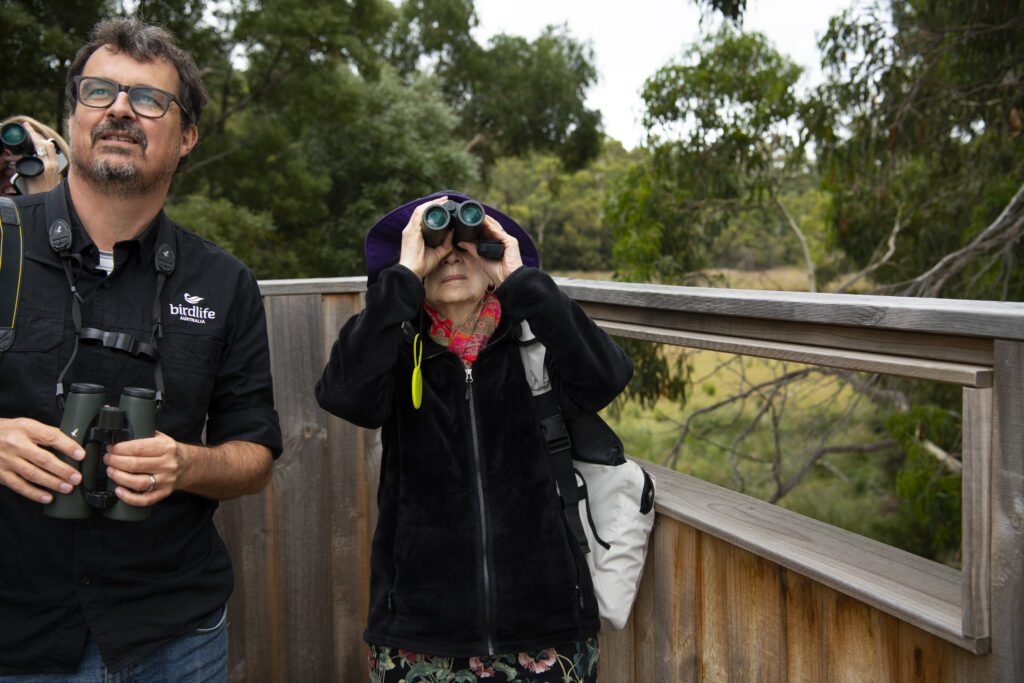
Binoculars are one of a birdwatcher’s most important pieces of equipment
For those just starting out, read our practical guide to assist you in making the right choice.
Choosing the best binoculars for birdwatching
Choosing the right magnification
There are many options for the magnification level of your binoculars – affecting how large the birds appear when you look through them – but bigger isn’t always better, and benefits can also come with drawbacks.
- 8× and lower: Binoculars with lower magnification are great for children who struggle with holding binoculars still and finding birds, as they provide a greater field of vision, are lighter and easier to focus.
- 10×: A good magnification for general birdwatching – magnified so you can see the bird well, and they’re not too heavy to carry
- Beyond 10×: Although these provide higher magnification, they are difficult to hold still (the exception is high-magnification binoculars with electronic stabilisers).
Understanding the lens size
The size of the lens influences three things: weight; brightness; and field of view. The greater the lens, the heavier the binoculars, the brighter the image and the larger the field of view (meaning that it is easier to find birds).
- ×20: This is usual in compact binoculars; the field of view may be restricted, and they don’t let in much light, so are less useful in low-light situations. Nevertheless, they may be a good second pair to have just in case…
- ×40: A good compromise, with a reasonable field of view and they let let in much more light
- ×50: These binoculars let in lots of light and have a wide field of view, but they are usually very heavy!
Balancing price and quality
It is difficult to find a pair of binoculars suitable for regular use that cost less than $500. Before you buy, it’s worthwhile to ask your retailer whether they will give you a BirdLife Australia member’s discount; some BirdLife branches have existing arrangements with a local dealer.
When buying binoculars, bear in mind that you get what you pay for: cheaper models may quickly go out of alignment, with no options for repair. Their coating may deteriorate and give you an image that is tinged pink or yellow. Eventually they may take in water or dust. We recommend getting a pair that has at least a 10-year warranty and is waterproof, so they can be cleaned easily.
Preparing for service and repairs
No matter how careful you are, binoculars sometimes get damaged, and then the question is how long can you live without them while they are getting fixed?
Expensive, top-end binoculars should be repaired for free, but there are varying standards of processing, and repairers may (or may not) provide you with a spare pair in the meantime. Ask owners of expensive pairs for their advice and past experiences.
Choosing by feel
In the end, your binoculars need to feel right for you. They must fit your nose and your hands so you can hold them tightly and with good balance, and that really comes down to personal preference. This may not be such a big issue when you are buying a mid-range pair, which are largely similar in build, but if you’re after an expensive pair, you’ll definitely want some that feel right for you.